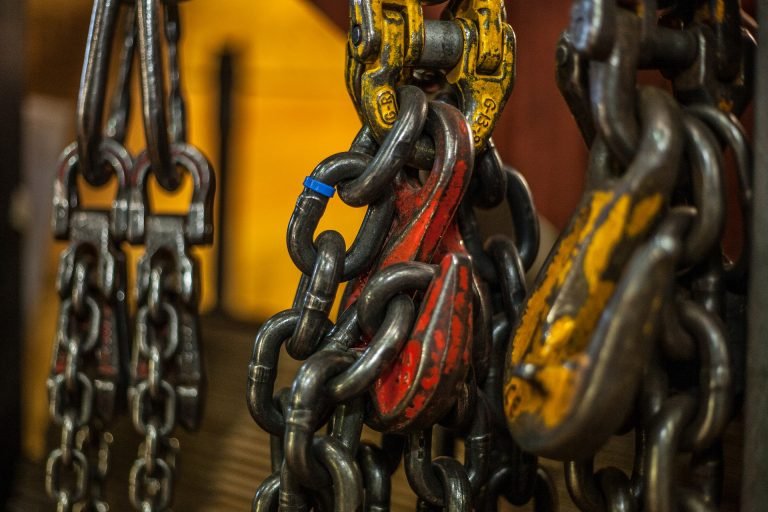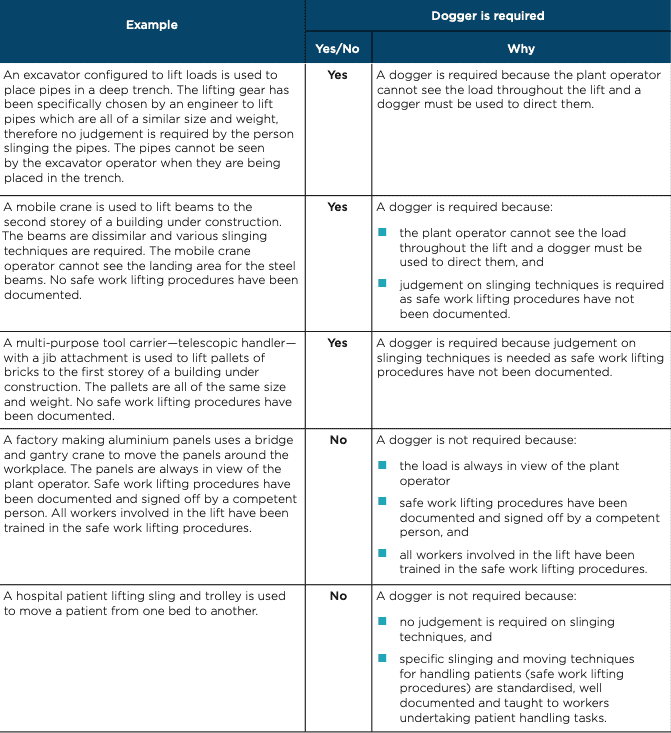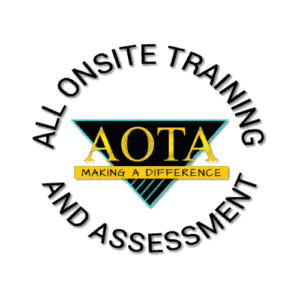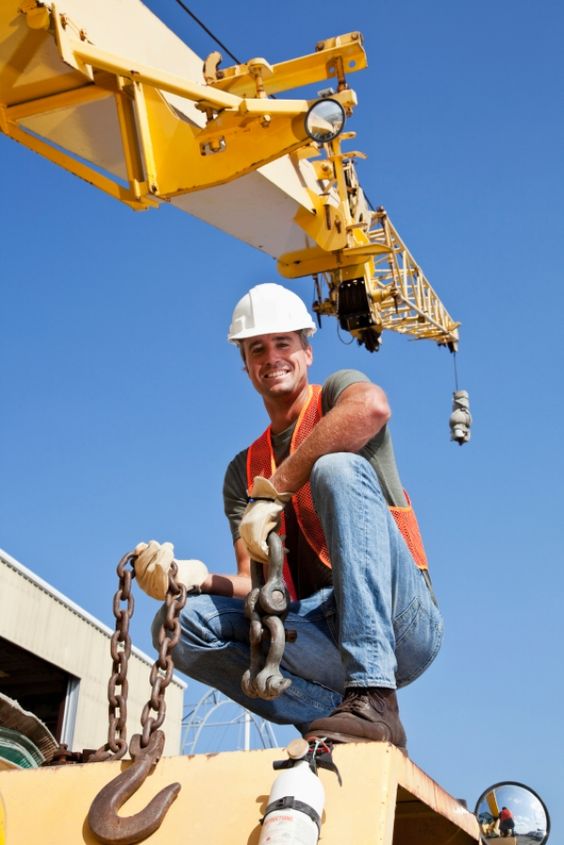Do You Know What Dogging Work Is?
Dogging work is the process of guiding a crane through its motions, and is the biggest part of dogging work.
This involves:
- Communicating with the operator to direct their movements.
- Selecting appropriate slinging methods and lifting gear by considering load size and shape, determining load weight (its mass) and centre of gravity, inspecting lifting gear like chains, slings, ropes, cables and hooks used to attach loads to plant to ensure it is not defective.
Dogging work also includes:
- Directing a plant operator in the movement of a load when the load is out of the plant operator’s view by communicating with the plant operator using hand signals, whistles or two-way radios.

Do you know the difference between rigging and dogging?
Rigging and dogging are two terms that get used in the same context a lot, but they’re actually two different things.
The dogman is responsible for anything below the crane hook, and the rigger is responsible for anything above the crane hook as well as below the hook.
Reference Article: “So You Want To Be A Rigger”

Do you need to do dogging before rigging?
To put simply, a rigger is also a dogger because all riggers either have experience or training in dogging. To carry out work as a rigger, you need to have undergone a Dogging training course.
A dogger is an individual who performs the initial inspection of components and materials for a specific purpose. They ensure that the components and materials are in good condition and meet specified requirements. A dogger may also be called upon to perform quality control checks on items such as packaging and labeling.
Since everything has to be inspected before it can be used, it makes sense that this person would be known as a dogger. This will help prevent any issues with defective parts or materials from making it into production.
Do you know who does dogging work?
Well, we’re here to tell you.
It’s not a sport—it’s a set of tasks that are part of the rigging industry.
The person who does dogging work is called a dogger or dogman, and they must hold a Dogging HRW Licence to carry out this type of work.
Dogging work can also be carried out by licensed riggers.
Licensed riggers complete the Dogging Unit of Competency to get their rigging HRW licence, which allows them to legally undertake dogging work.
Using purpose-designed lifting frames or attachments will make this easier to achieve. Where the loads vary within a known weight range or a known range of centres of gravity, the specified slinging methods need to be suitable for the full range without the need to individually identify or estimate weights or centres of gravity.
When Do You Need A Dogger?
A dogger is required to carry out dogging work. Slinging loads where judgement is not required and where the load is always in view of the plant operator is not dogging work, therefore a dogger is not required.
The purpose of the dogger is to provide assistance to plant operators by performing tasks that they could not or would not perform themselves.
Is a dogger required when using a vehicle loading, bridge or gantry crane?
As a general rule, the dogger is not required when using a vehicle loading, bridge or gantry crane. HRW licences include the application of load estimation and slinging techniques to move a load. A licensed operator of a vehicle loading, bridge or gantry crane is therefore able to make judgements on the load and slinging method and select and inspect the lifting equipment to be used for the crane they are licensed to operate.
However, if you are using a dogger in conjunction with your vehicle loading, bridge or gantry crane, then yes it must be used in accordance with any requirements stipulated by your licence conditions.

As a worker in training, can you perform dogging work?
The short answer is yes.
Workers in training can perform dogging work.
A worker in training can only perform dogging work without a Dogging HRW Licence if the worker is enrolled in a Dogging HRW Licence training course and is under the supervision of a licensed dogger.
Note: A plant operator can also be a licensed dogger.
However, when moving a load, the plant operator cannot supervise a worker enrolled in a training course because the plant operator would be at the crane controls and therefore unable to effectively supervise the worker.
But what industries have the most demand for dogging?
Let’s take a look at some of the most popular industries that need doggers on their projects:
-Mining and Construction
-Mining Maintenance
-Bridge Construction
-Tunneling for Road and Rail
-Major Projects (like oil & gas construction)
-Oil & Gas Maintenance (shutdown)
Becoming a Dogger is also a great opportunity to jump straight into a career in the industries mentioned above. Some Doggers even become qualified riggers, which opens up the possibility of more specialised training and improve your career prospects ten fold..
If you would like to chat to one of our team, about this in demand qualification, you can direct your enquiries: Here or call our training hotline on 02 42068378
To Your Success in 2023 and Beyond!
Nigel

